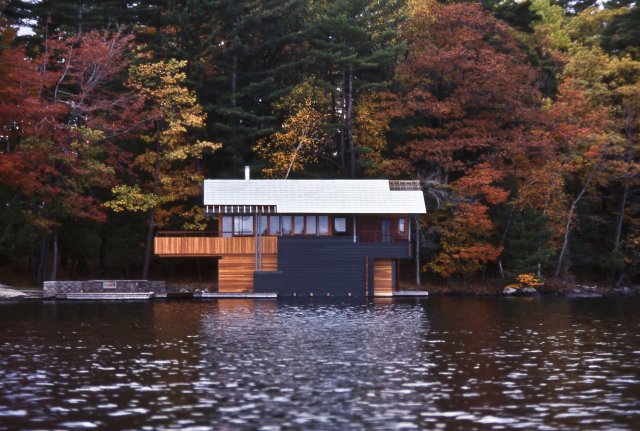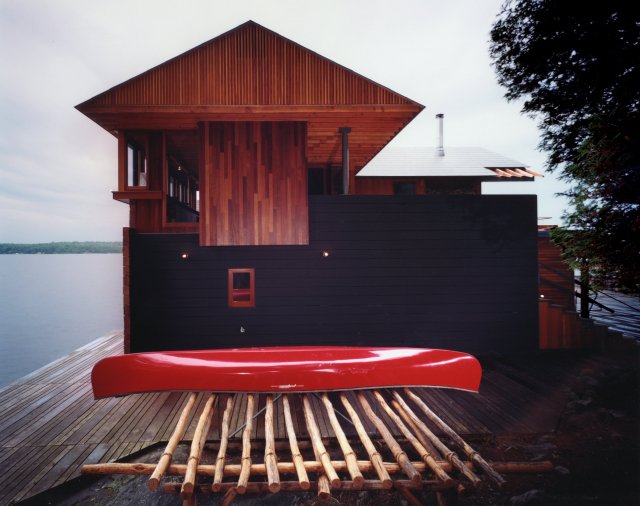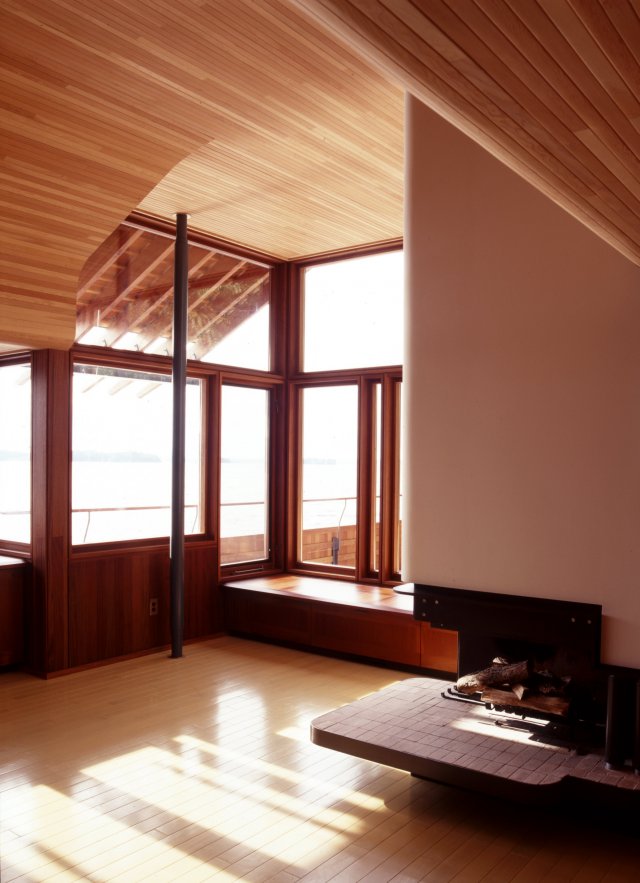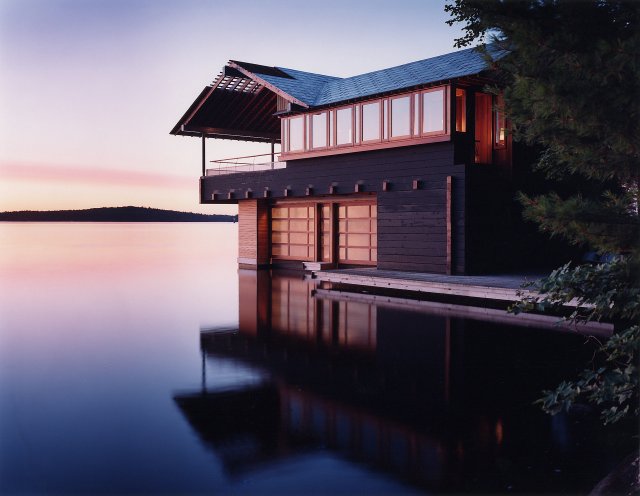Among Ontario’s millions of acres of forests and tens of thousands of lakes, no expanse has become more closely associated to cottages than Ontario’s iconic Muskoka region. Nestled between the shores of Georgian Bay and the western gate of Algonquin Park, it is among the world’s most renowned cottaging destinations – home to over 100,000 seasonal property owners. The region’s tourism industry dates back to the 1860’s when steamships opened Muskoka’s 16,000 lakes to thousands of urban dwellers in southern Ontario. By the turn of the century, Muskoka had emerged as one of Ontario’s premier vacationing destinations with numerous hotels, inns and boarding houses dotting its waterways. As vacationers became seasonally established, they began building cottages – taking advantage of smaller lakes which could only be accessed by rowboats and canoes. This close relationship between waterways and the vacation industry would also lead to the proliferation of boathouses, a unique building type especially designed for the storage of boats and which would become part of the region’s unique cultural landscape.
Situated on the southwestern shore of Lake Muskoka, the Muskoka Boathouse, designed by
Shim-Sutcliffe Architects, provides a contemporary take on this traditional building type. In similar fashion to other boathouses in the region, this modern counterpart not only provides storage for boats but also contains living spaces such as a sleeping cabin and kitchenette. Its careful balance between tradition and innovation, as well as its thoughtful approach to siting and context, make this award winning boathouse an extraordinary example of cottage country architecture.
In this post of our summer blOAAg series
Cabins, Cottages, and Camps Shim-Sutcliffe Architects tell us about the design of the Muskoka Boathouse, winner of a prestigious
Governor General’s Medal in Architecture.

Photo Credit: James Dow
From the Architects: Like Le Corbusier’s rustic cabin in southern France or the Adirondack camps of upstate New York, The Muskoka Boathouse is a sophisticated hut in the wilderness. Building a modern cabin in Canada requires considering the traditions of building within a harsh climate and rugged landscape while simultaneously inventing new ways to posit a modernist tradition.
Located on the southwestern shore of Lake Muskoka, this boathouse exists within several landscapes. The primary landscape is the Pre-Cambrian granite of the Canadian Shield that forms the base of Ontario’s myriad lakes and forests. Secondly, the pioneer log cabins, ornate Victorian cottages, and custom wooden boats built by local craftsmen, form the framework that defines the region’s rich cultural and social landscape. Finally, the mythical Canadian landscape which has been most clearly articulated in the paintings of The Group of Seven - who portrayed the wild, romantic, and often hostile Canadian landscape at the turn of the century.

Photo Credit: James Dow
The interlocking elements within this project - that align building and nature, land and water, and ultimately tradition and progress - define the experience of the boathouse. The vertical layers of the project form a threshold between the inner roof garden and the water’s edge to complete the space defined naturally by the edge of the forest. As the ceiling planes are reflected in the water below, materials and methods are interwoven in the horizontal layers of the project to intensify the spatial expanse of the views oscillating between the woodland and the lake beyond.
The interweaving of the layers was created with a unique building sequence that began with the dock layout on the frozen lake. The position of each crib was drawn and a hole cut into the ice. As each crib was completed it was filled with granite ballast and lowered to settle on the lakebed. From this primitive submerged structure, the heavy timber outer walls emerge to protect an intricately crafted sleeping cabin. Interior finishes further intertwine the ordinary and the sophisticated. Cabinets of Douglas fir panels and intricate mahogany windows are detailed to allow differential settlement from movement in the crib foundations. Traditional Victorian beadboard ceilings are transformed into a shaped Douglas fir ceiling in the sleeping cabin. Mahogany duckboards in the bathroom echo the typical Muskokan boat deck.

Photo Credit: James Dow
Materials and construction techniques create a juxtaposition that strikes a balance between modernism and the vernacular, building and nature, light and dark, as well as the intellect and the senses - all through its conceptual arrangements, material palette, spatial organization and construction methods.

Photo Credit: James Dow